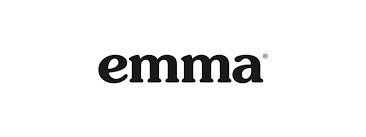Welcome to the ultimate guide where we pit two of the most popular email marketing tools against each other: HubSpot Email Marketing and Emma. In 2024, the landscape of email marketing continues to evolve, making the right tool choice more crucial than ever. Whether you’re a small business owner, a marketing professional, or simply looking to enhance your email marketing strategy, this detailed comparison will help you make an informed decision. So, let’s dive into our first point of comparison and see how these two giants stack up against each other.
| HubSpot Email Marketing | Emma |
|---|---|
 |  |
| G2 Score – 4.4 out of 5 stars | G2 Score – 4.0 out of 5 stars |
| TrustRadius Score – 8.5 out of 10 | TrustRadius Score – 8.6 out of 10 |
User Interface and Ease of Use
HubSpot Email Marketing: A Seamless User Experience
HubSpot is renowned for its user-friendly interface, designed to make the user’s journey as smooth as possible. The platform’s intuitive design stands out, especially for those who may be new to email marketing.
HubSpot’s drag-and-drop editor is a highlight. It allows you to effortlessly build emails with a professional look, even if you’re not a design expert. The process is not only easy but also enjoyable, letting you mix and match different elements to create the perfect email.
The platform is designed to cater to users of all skill levels. HubSpot guides you through each step, making the process of creating and managing email campaigns straightforward and stress-free.
Emma: Simplicity and Functionality Combined
Emma, on the other hand, focuses on simplicity and functionality. Its interface is clean and uncluttered, making navigation a breeze. Setting up an email campaign in Emma is quick and hassle-free. The platform offers a range of pre-designed templates that you can customize to suit your needs. This simplicity is perfect for those who want to get their campaigns up and running without any complications.
Emma’s design is geared towards efficiency. The platform eliminates unnecessary complexities, making it ideal for small businesses or individuals who prefer a more straightforward approach to email marketing.
Comparing the Two
Both HubSpot and Emma offer fantastic user experiences but cater to different preferences. HubSpot is all about providing a seamless, intuitive experience with a touch of sophistication. Emma, meanwhile, wins points for its straightforward, no-nonsense approach to email campaign setup.
The choice between HubSpot and Emma in terms of user interface and ease of use will depend on what you value more: a comprehensive, guided experience (HubSpot) or a simple, efficient approach (Emma). Both platforms excel in their own right, making them top contenders in the email marketing arena.
Email Deliverability and Performance
HubSpot Email Marketing: Ensuring Your Messages Land in the Inbox
Email deliverability is a crucial aspect of any marketing strategy, and HubSpot excels in this department. It employs advanced techniques to ensure high deliverability rates.
HubSpot offers advanced deliverability features, including spam filter testing and send-time optimization. These tools are designed to maximize the chances of your emails reaching the intended inboxes and not getting lost in spam folders.
With HubSpot, you get detailed analytics to track the performance of your emails. This includes open rates, click-through rates, and more. Such insights are invaluable for refining your email strategy and understanding your audience better.
Emma: Focused on Reliable Email Delivery
Emma also places a strong emphasis on email deliverability, ensuring that your campaigns reach their targets effectively. Emma provides essential tools for high deliverability, focusing on the basics like list management and segmentation. These features are user-friendly and effective, helping to increase open and read rates.
Emma’s analytics tools, while not as extensive as HubSpot’s, offer clear and concise insights into your email campaign performance. This allows for quick assessments and adjustments to your strategy.
Comparing the Two
In terms of email deliverability and performance, both HubSpot and Emma have robust offerings. HubSpot is ideal for those who want a more comprehensive suite of tools and in-depth analytics. Emma, on the other hand, is great for users who prefer a more streamlined approach but still want reliable deliverability.
Your choice between HubSpot and Emma for email deliverability should depend on the complexity of the insights you desire and the level of control you want over your email campaigns. HubSpot offers a more detailed, data-driven experience, while Emma provides simplicity and effectiveness.
Integration Capabilities: Expanding Your Marketing Reach
HubSpot Email Marketing: A Wide Array of Integration Options
In today’s interconnected digital marketing world, the ability to integrate with other tools and services is vital. HubSpot excels in this area, offering a broad range of integration options. HubSpot allows integration with a myriad of tools, including CRM systems, social media platforms, and various marketing tools. This wide-ranging integration capability enables a more cohesive and streamlined marketing strategy, as all your tools can communicate and work together seamlessly.
The integration of HubSpot’s email marketing tools with its own CRM is a standout feature. This allows for more targeted and personalized email campaigns, as you have access to detailed customer data and interactions.
Emma: Effective, Targeted Integrations
Emma, while not as expansive as HubSpot in terms of integration, focuses on providing effective and targeted integration options. Emma offers integrations with key services like CRM systems and social media platforms, which are essential for a holistic email marketing approach. These integrations are designed to enhance your email campaigns and make them more effective.
Setting up integrations in Emma is straightforward, making it easy for users of all skill levels to expand their marketing ecosystem without technical complexities.
Comparing the Two
When considering integration capabilities, HubSpot and Emma cater to different needs. HubSpot is ideal for those seeking a wide array of integration options and a more interconnected marketing approach. Emma, on the other hand, offers more focused integrations, sufficient for enhancing your email marketing without overwhelming you with too many options.
In summary, your choice between HubSpot and Emma in terms of integrations depends on the breadth and depth of integration you need. HubSpot is well-suited for a comprehensive, integrated marketing strategy, while Emma is great for straightforward, essential integrations.

Related: Check out our free SEO suite

Pricing and Value for Money
| HubSpot Email Marketing | HubSpot’s email marketing tool is part of the HubSpot Marketing Hub, which offers the following plans: Free Tools: Basic email marketing features with HubSpot branding. Starter Plan: Starting at $45/month, includes email marketing, ad management, landing pages, forms, and more. Professional Plan: Starting at $800/month, offers advanced marketing automation, smart content, and A/B testing. Enterprise Plan: Starting at $3,200/month, adds features like adaptive testing, advanced reporting, and custom event triggers. |
| Emma | Pricing is typically tiered based on features and list size: Pro Plan: Offers automation, segmentation, and analytics. Pricing usually starts at around $89/month. Plus Plan: Includes additional features like landing pages and A/B testing. Pricing is higher and usually requires a quote from Emma. Enterprise Plan: Custom pricing for advanced needs like custom integrations and dedicated support. |
HubSpot Email Marketing: Premium Services at Varied Price Points
Pricing is a pivotal factor for many when choosing an email marketing tool. HubSpot, with its array of features, offers a range of pricing options to suit various needs. HubSpot’s pricing is structured in tiers, from a basic free plan to more advanced, premium options. This tiered approach allows businesses of different sizes and budgets to find a plan that suits their requirements. The more advanced the plan, the more features and capabilities you unlock.
Opting for HubSpot can be seen as an investment in a comprehensive marketing strategy. The platform’s pricing reflects the extensive suite of tools and features it provides, which can be a significant value for money if leveraged effectively.
Emma: Cost-Effective Solutions for Targeted Needs
Emma positions itself as an affordable and efficient email marketing solution, offering straightforward pricing plans. Emma’s pricing is clear and concise, mainly based on the size of your email list. This transparent approach makes it easy for businesses to understand what they’re paying for and select a plan that aligns with their needs. For small to medium-sized businesses or those mindful of their budget, Emma offers great value. The platform provides all the essential features for effective email marketing without the hefty price tag of more comprehensive tools.
Comparing the Two
In terms of pricing, HubSpot and Emma cater to different segments of the market. HubSpot is suitable for businesses that require a wide range of marketing tools and are willing to invest more for broader capabilities. Emma, in contrast, is more appropriate for businesses looking for an effective, budget-friendly email marketing solution.
Your choice between HubSpot and Emma in terms of pricing will depend on your specific needs and budget. HubSpot offers a premium, feature-rich platform suitable for a comprehensive marketing strategy, while Emma provides a more focused and economical alternative for email marketing.
Customer Support and Educational Resources
HubSpot Email Marketing: Extensive Support and Learning Opportunities
The level and quality of customer support can greatly enhance user experience and success with an email marketing tool. HubSpot is known for its excellent customer support and extensive educational resources. HubSpot offers various support channels, including email, phone, and live chat, ensuring that users can access help in the way that best suits their needs. The support team is known for being responsive, knowledgeable, and helpful.
Beyond direct support, HubSpot provides a wealth of learning materials through HubSpot Academy, extensive documentation, and active community forums. These resources are invaluable for users looking to expand their marketing knowledge and skills.
Emma: Focused and Efficient Support
Emma, while having a smaller scale compared to HubSpot, offers effective customer support and useful educational resources that meet the core needs of email marketers. Emma provides customer support via email and phone, with a reputation for being accessible and responsive. The support team is adept at addressing various customer queries and issues efficiently.
Emma offers practical resources such as a knowledge base, video tutorials, and an informative blog. These materials are geared towards helping users quickly understand and make the most of the platform’s features.
Comparing the Two
Both HubSpot and Emma provide reliable customer support, but HubSpot offers a broader range of support options and more extensive educational resources. HubSpot is ideal for users who want comprehensive support and opportunities for learning and community engagement. Emma, on the other hand, is well-suited for users who prefer straightforward support and essential learning resources.
In summary, while both platforms are commendable in their customer support and educational offerings, your choice will depend on the level of support and resources you’re looking for. HubSpot is the go-to for an extensive range of support options and educational materials, while Emma is great for focused support and practical resources.
Automation and Workflow Capabilities
HubSpot Email Marketing: Advanced Automation for Comprehensive Campaigns
Automation in email marketing can drastically improve efficiency and campaign effectiveness. HubSpot offers a suite of advanced automation tools that cater to sophisticated marketing strategies. HubSpot provides complex automation capabilities, allowing you to create detailed workflows based on user behaviors and preferences. This level of automation enables highly personalized and targeted email campaigns, enhancing engagement and conversion rates.
The integration of HubSpot’s email marketing tools with its CRM system further enhances automation capabilities. This allows for dynamic content and highly personalized emails based on comprehensive customer data, offering a more tailored approach to your audience.
Emma: Streamlined Automation for Efficiency
Emma, while less complex than HubSpot, offers streamlined and effective automation features, focusing on user-friendliness and efficiency. Emma’s automation tools are designed to be straightforward and easy to use, making them ideal for businesses looking for efficient, yet effective automation. You can set up automated welcome emails, anniversary messages, and other triggered responses without needing extensive technical knowledge.
Emma focuses on providing the essential automation features necessary for successful email marketing. This approach ensures that users can leverage the power of automation without the complexity of more advanced systems.
Comparing the Two
HubSpot and Emma offer different levels of automation functionality. HubSpot is suited for businesses that require detailed, customizable automation workflows and are equipped to manage these sophisticated systems. Emma, on the other hand, is ideal for those who need simple, easy-to-manage automation features that efficiently cover the basics of email marketing.
Your choice between HubSpot and Emma in terms of automation will depend on the complexity and customization level you need in your email marketing campaigns. HubSpot is excellent for advanced, intricate automation needs, while Emma is appropriate for basic, straightforward automation requirements.
Analytics and Reporting: Measuring Success
HubSpot Email Marketing: In-Depth Analytics for Data-Driven Decisions
Analytics and reporting are crucial for understanding the effectiveness of your email marketing campaigns. HubSpot provides comprehensive analytics tools that offer deep insights into campaign performance. HubSpot’s analytics go beyond basic metrics like open rates and click-through rates. You can dive into detailed reports on user behavior, conversion rates, and more. This level of detail helps in making informed, data-driven decisions for future campaigns.
One of the standout features of HubSpot’s analytics is the ability to customize dashboards. This means you can tailor the analytics view to focus on the metrics that matter most to you and your business.
Emma: Clear, Concise Reporting for Quick Insights
Emma, while offering a more streamlined approach to analytics, provides clear and concise reporting tools that give you a quick overview of your campaign’s performance. Emma’s reporting tools are designed to be user-friendly, offering essential insights without overwhelming users with too much data. This approach is ideal for businesses that need a straightforward understanding of their campaign performance.
Emma focuses on providing key metrics like open rates, click-through rates, and unsubscribes. This helps in quickly identifying areas of success and those needing improvement.
Comparing the Two
In the realm of analytics and reporting, HubSpot and Emma cater to different needs. HubSpot is ideal for those who want in-depth, customizable analytics to deeply understand their audience and campaign performance. Emma, on the other hand, is perfect for users who prefer a more straightforward, easy-to-digest overview of their campaign metrics.
Your choice between HubSpot and Emma for analytics and reporting should depend on the level of detail and customization you need. HubSpot offers a comprehensive, data-rich approach, while Emma provides a simplified, straightforward analytics experience.
Conclusion
In the competitive landscape of email marketing in 2024, HubSpot Email Marketing and Emma stand out as leading tools, each with its unique strengths. HubSpot offers a comprehensive suite with advanced automation, in-depth analytics, and extensive integrations, making it ideal for businesses seeking a robust, data-driven marketing approach. Its extensive support and educational resources are a boon for marketers looking to deepen their expertise. On the other hand, Emma shines with its user-friendly interface, streamlined automation, and straightforward analytics, catering to businesses seeking simplicity and efficiency. Its focused integrations and practical support resources make it a great choice for small to medium-sized enterprises or those new to email marketing.
Ultimately, the decision between HubSpot and Emma hinges on your specific marketing needs, the complexity of your campaigns, and the depth of analytics you require. HubSpot is well-suited for comprehensive, detailed marketing strategies, while Emma is excellent for straightforward, efficient email marketing approaches. Both tools offer unique advantages, and the best choice will align with your business goals, resources, and the level of sophistication you desire in your email marketing campaigns.
Read Next
- Campaign Monitor vs Zoho Campaigns: The Best Email Marketing Tool for 2024
- Campaign Monitor vs SendGrid: The Best Email Marketing Tool for 2024
- Campaign Monitor vs Klaviyo: The Best Email Marketing Tool for 2024
- Campaign Monitor vs Moosend: The Best Email Marketing Tool for 2024
- Campaign Monitor vs Mailjet: The Best Email Marketing Tool for 2024






















Comments are closed.